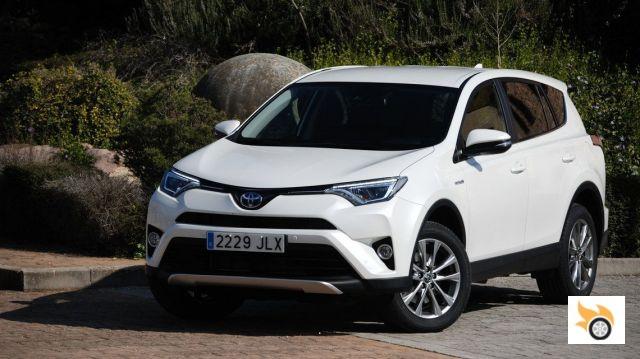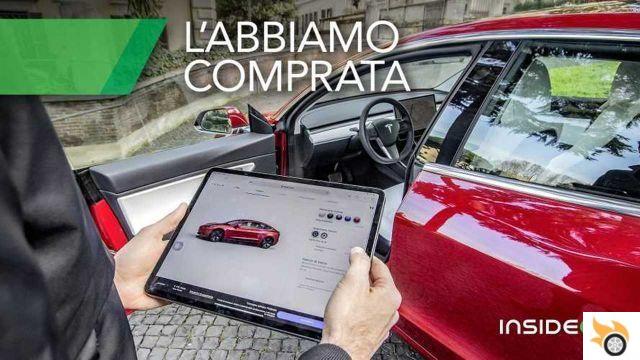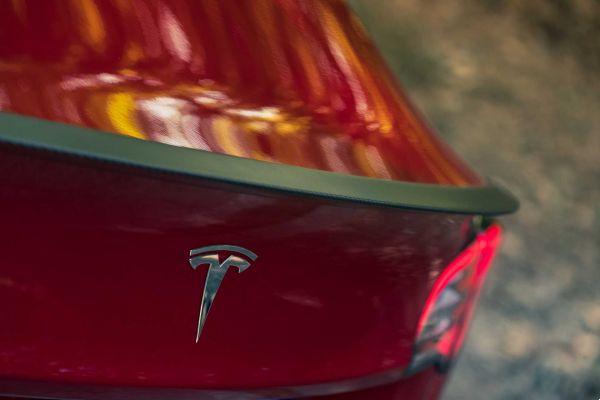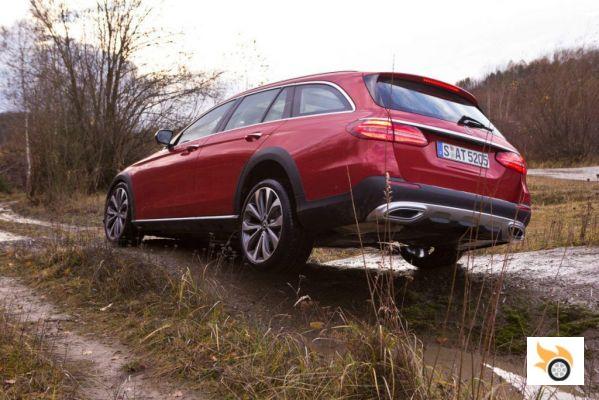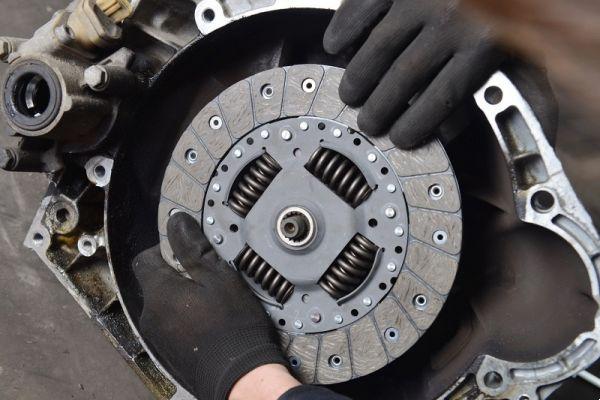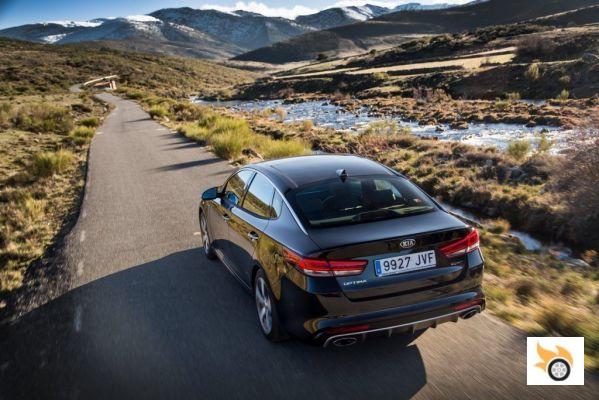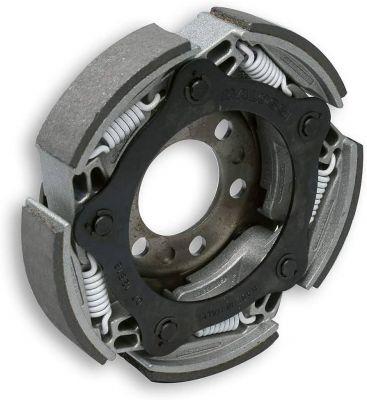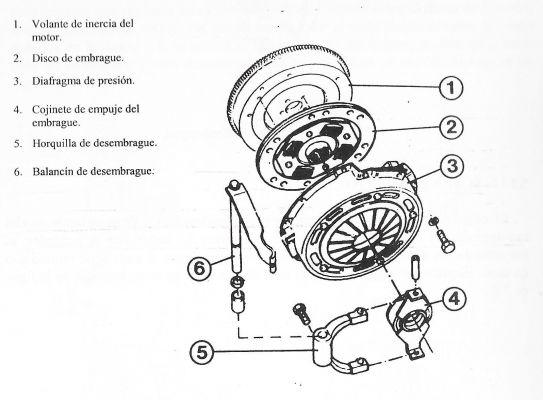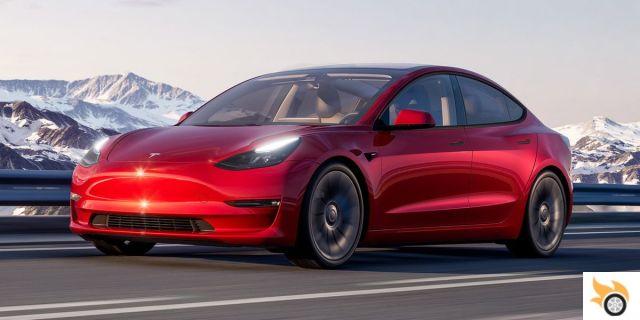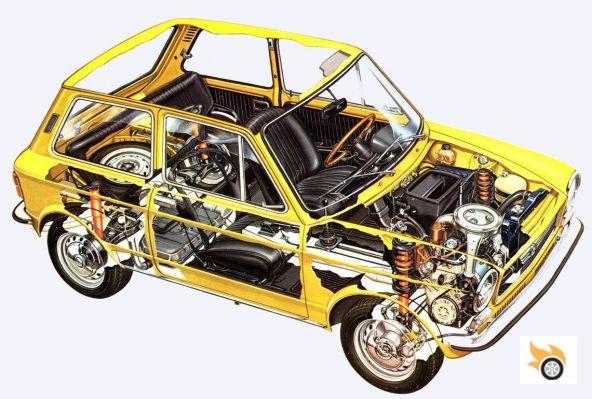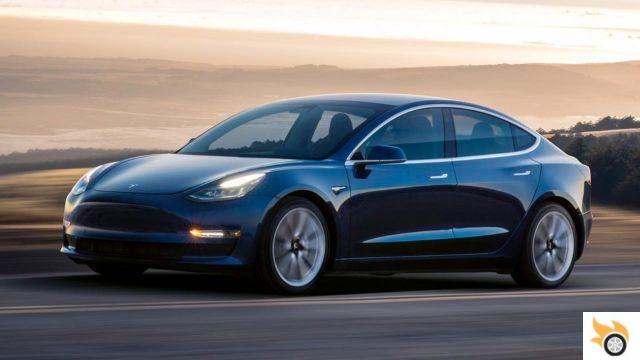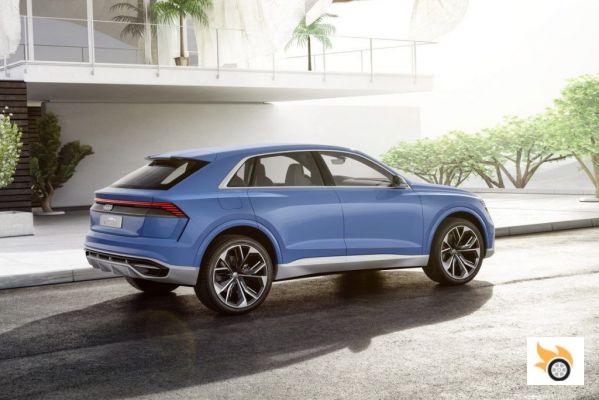![What is Tesla Model 3 Valet Mode? [How to use]](/images/posts/e52d68c0358bad42248d0690c9ca6652-0.jpg)
Many car owners are hesitant when it comes to other people driving their car, especially people they don't know. When you're making an investment in a Tesla you want to be sure that your car is safe and that valuable information stored in the car's system cannot be accessed by others entering the vehicle.
Valet Model 3 mode will limit top speed, limit acceleration speed, lock private compartments and hide personal information. It's ideal to turn on when someone you don't know is going to be accessing or driving your car and can only be turned off with a 4-digit PIN of your choice.
Tesla Valet Mode is an ideal feature for a highly sought-after car like the Tesla. From how to access Valet Mode, to why it's valuable to Tesla owners, this article will dive into the insights behind Tesla's high-tech feature that keeps your car safe. Read on to find out how Model 3 Valet Mode protects your Tesla from potential valet problems.
- Why does Tesla incorporate Valet Mode?
- Why is Valet Mode important?
- Valet mode features
- How to use Valet mode on model 3
- When to activate Valet mode
- Which Teslas have Valet Mode?
- Can you charge your Tesla in Valet mode?
- Can you summon a Tesla in Valet Mode?
- Features that are not compatible with Valet mode
- Conclusion
Why does Tesla incorporate Valet Mode?
Tesla is known for providing updated features and fixes in response to customer complaints. They distribute these changes via their own over-the-air updates which users can download as a software update in their home garage. These updates only take about 25 minutes, but can install completely new features for your car. Because of their huge drive towards customer service, as well as making the car usable and convenient for their drivers, Tesla released the original Valet Mode in 2015.
The previous functionality of Valet Mode was the use of a Valet Key which restricted the car's speed, engine revs and restricted access to the glove box. However, the key was, unfortunately, difficult for drivers to use.
When Chevrolet offered the innovative change to the clunky Valet Key by implementing a virtual Valet mode, Tesla followed suit. Some of the reasons why the Valet Key has been deleted are due to these factors:
- The physical key can fall prey to hackers
- The physical key can be difficult for drivers to use
- It can be easy to lose the physical key, as it's not used all that often
In 2015, the Tesla software update allowed users to download Valet Mode as a setting on their car's touchscreen. It wasn't so simple for Tesla owners to turn on this aspect of the car at first, but flash forward a few years, Valet Mode is now user-friendly and very useful.
Why is Valet Mode important?
In July 2020, at a San Antonio resort, a Tesla Model S was taken for a joy ride by a valet attendant. The entire experience was captured on the TeslaCam, a built-in dashboard camera that is used by the autopilot functionality in the car. As if that wasn't bad enough, the assisted valet had an accident and the car was wrecked.
The valet driver turned on Cheetah Mode in the car and couldn't handle the speed, so he ended up crashing the car into a wall and damaging it extensively. If the owner had activated the Valet mode before handing over his car, this would not have happened.
For those owners who want to protect their valuable possessions while valeting at a restaurant or hotel, it's important to understand how to effectively use Valet Mode to secure your car.
Valet mode will implement the following security options:
- Limit the maximum speed
- Limit the acceleration rate
- Lock front trunk and glovebox
- Disable autopilot
- Hide personal information
- Hide previous navigation paths
Valet mode features
When Valet Mode is engaged, the car's operating system will immediately limit the top speed to 70mph and max power will be significantly reduced, so the 0-60mph time won't be the same as when the Tesla is running standard.
In addition to the speed controls, the front trunk and glove compartment are locked so that no one but the owner will be able to access these compartments of the car.
Valet Mode also disables Bluetooth, Wi-Fi, Homelink access and the "places" button on the map. Then all your information will be safe too, and no one will be able to connect a device to your car or look at your saved addresses.
How to use Valet mode on model 3
We'll look at how to activate Valet Mode from both the car's touchscreen and the mobile app, how to cancel Valet Mode, and what custom restrictions you can set when selecting Valet Mode.
Activation of Valet mode
To activate Valet mode:
- Park the Tesla
- Click on “Controls”
- Click on the name “Driver Profile”
- Click on “Valet Mode”
- Set 4-digit pin
You can also use the mobile app to turn Valet Mode on and off, assuming your vehicle is parked, by clicking 'Security' and then 'Valet Mode'.
When Valet mode is activated, the touch screen will display “Valet” as the driver profile. When Valet mode is enabled, other driver profiles will not be visible.
When it's the first time setting up Valet mode, it's ideal to do it via the car's touchscreen so you can set up a user PIN. This will ensure that you don't run into problems later when you want to enter normal mode.
It is important to remember that if the PIN setting in Drive is enabled, you will need to enter your Driver PIN before creating or entering a new Valet PIN. Once the car has been placed in Valet Mode, it will override the PIN to the Drive setting and Model 3 can be driven without having to enter the Drive PIN (but will still be limited by the limitations of Valet Mode).
Deactivation of Valet mode
Once Model 3 is parked, Valet mode can be deactivated by clicking on the Valet driver profile name and entering the previously set 4-digit PIN.
Alternatively, you can deactivate Valet mode with the mobile app. This way, you don't need to enter your PIN in the car because you're already logged into your app.
Once Valet mode is deactivated, all settings associated with the latest driver will be available again.
Restrictions on Valet mode
When your Tesla Model 3 enters Valet Mode, these restrictions will apply to protect your car:
- Speed becomes limited to 70 mph
- Acceleration is limited to “Chill”
- The front trunk and glove box will lock
- Voice commands are disabled
- Navigation system does not show previous locations (such as home or work)
- The autopilot functions are disabled
- Mobile access is disabled
- Homelink (if applicable) is not available
- Driver profiles are not available
- The touchscreen will not display the list of keys that are able to access Model 3
- Wi-Fi and Bluetooth are disabled and you cannot view or add a new device
While these features make the joys of owning a Tesla much less fun, they will protect your car from anyone who wants to take it on a joy ride. It's simple to turn Valet Mode on and off, and it will stay in a restricted mode until you choose otherwise.
How to adjust the maximum speed for Valet mode
The maximum speed for Valet mode defaults to 70 mph, but you can customize it to suit your preferences.
To change the maximum speed for Valet mode:
- Click on “Controls”
- Click on “Security”
- Activate “Speed limit mode”
- Set a 4-digit PIN
- Set maximum speed
Valet Mode will set the default maximum speed to 70 mph, but by setting and activating Speed Limit Mode, you can set a custom maximum speed that cannot be changed without your PIN.
The maximum speed for speed limit mode will need to be set on your Tesla's touchscreen the first time, but after that, you can turn speed limit mode on and off from your mobile app.
When to activate Valet mode
While many cars now have virtual valet modes to help secure someone's car while others drive, Tesla needs these capabilities even more thanks to its autopilot capabilities.
Tesla's Autopilot functionality currently allows the car to park itself and change lanes once the driver turns on the turn signal. Autopilot can be activated by any user, so it is important to have Valet mode activated so that someone cannot exploit this feature, especially since they may not know how it works.
Another reason you may want to activate Valet Mode is when your teenager is asking to drive your car, even if you have a high level of trust in your child, it can prevent them from speeding or using features that could become dangerous for a new driver.
You can also choose to only use speed limit mode for your teenager, so they can still access navigation, glove box and other features.
And finally, the most obvious reason to activate Valet Mode is when you are parking your car and an attendant will be driving your car. The only tip you should consider is informing the valet how to get your car in and park, as many Tesla drivers report confusion from valet attendants when Valet mode is active.
Which Teslas have Valet Mode?
All Tesla vehicles are equipped with valet mode. This includes both new Teslas and used Teslas.
You can also expect continued updates to Valet Mode features in future software updates. As the system becomes smarter and more safety-focused, Valet Mode will be easier to use, deploy and configure in your vehicle.
Can you charge your Tesla in Valet mode?
Yes, you can still charge your Tesla while in Valet Mode.
This can be useful when visiting a car pickup location that has destination chargers on site. The valet will likely plug your Tesla in to charge while it's parked.
Can you summon a Tesla in Valet Mode?
Smart Summon cannot be used in Valet mode.
The reason smart calling won't work while Valet Mode is enabled is because the summon feature requires navigation to connect to your phone, and Valet Mode disables all navigation options. It's good to know that Smart Summoning is still in development, so it might be possible that it will eventually work harmoniously with Valet Mode.
However, if your Tesla is parked in valet and you want to use Smart Summon, you can simply disable Valet Mode on your smartphone app and proceed with using Smart Summon.
Features that are not compatible with Valet mode
There are some other features that will not be accessible while in Valet Mode.
The most obvious feature that drivers won't have access to is the play mode, which is designed to allow drivers access to the Tesla's full acceleration power. However, this mode is only included on some Teslas.
As discussed above, all browsing features will also be disabled. This keeps the owner's private address and locations secure.
Conclusion
Make sure you activate Valet Mode whenever you are approaching a parking station or are allowing someone you don't know to drive your vehicle. This will give you added peace of mind that your investment is being guided with additional security features enabled.
The Tesla Model 3 is a fun car to drive and many people enjoy taking advantage of the thrill 0-60 mph and amazing autopilot capabilities, but these features should be for driver use only.
Now that you know what Valet Mode is and how to use it, your Tesla should be much better protected in future valet situations.
![What is Tesla Model 3 Valet Mode? [How to use]](/images/posts/e52d68c0358bad42248d0690c9ca6652-1.jpg)
When the Tesla CEO announced his company's futuristic Cybertruck in November 2019, even the most ardent Tesla aficionados thought they were being fooled. After all, the steampunk-style video circulating on social media of Musk touting his electric "truck" looking more like a trapezoidal alien buggy from a sci-fi movie sure seemed like a publicity stunt. But is the Cybertruck really a joke?
The Cybertruck is no joke; it's Tesla's first attempt at an all-electric pickup truck. However, as with any breakthrough technology release, there are many questions surrounding the vehicle.
Tesla has collected approximately one million orders and deposits for the Cybertruck to date, with the first production series due to ship to select homes in late 2021 and mass production starting in 2022. However, until the Cybertruck can he effectively prove his mettle in the highly competitive pickup landscape, he will continue to be met with a torrent of doubt.
Is the Cybertruck a joke?
Cybertruck is no joke; it's Tesla's effort to bring their cutting-edge EV technology to the heavy-duty vehicle world. With its new gigafactory in Austin, Texas up and running as of May 2021, the company is set to deliver a handful of its first orders to households in late 2021.
While Musk says he's received so many orders for the Cybertruck that the company has "stopped counting," crowdsourced research estimates there have been over a million orders for the futuristic pickup.
Why do people say cybertruck is a joke?
Although a basic internet search will reveal that the Cybertruck is a real thing and that the company is in full swing with its development of the electric pickup truck, there are still some people who have their doubts that the Cybertruck will ever come. on the market. There are several good reasons behind the suspicions of conspiracy theorists.
Elon Musk's reputation
Despite being the richest man in the world and the driving force behind the company that made electric cars economically viable, anything Elon Musk says will immediately polarize large segments of the global population.
While Musk is often singled out for “if I could dine and pick one person's brain”, with millions of people seeing Musk as a visionary innovator, there is also a large crowd who see him as a swashbuckling tech revolution it is more hot air than substance. Some reasons for this include:
While neither of these issues directly relate to the Cybertruck's design and release, the combination of Musk's reputational factors help demonstrate why many people choose to take an "I'll believe it when I see it" approach to the Cybertruck.
The physical appearance of the Cybertruck
If people are inclined to believe that the Cybertruck is a joke, then the vehicle's physical appearance likely serves as proof that Musk is trolling everyone with his claims of entering the realm of heavy-duty consumer vehicles.
To pickup purists, the Cybertruck is a truck only in the sense that it's labeled as such by Musk. It has few of the physical characteristics that typically define a pickup truck, such as a rectangular cab and long open bed for hauling large items. Instead, the Cybertruck looks like an oversized trapeze on wheels, with the unusual look sure to take some getting used to even the staunchest Tesla supporters.
While there have been myriad attempts to describe the Cybertruck's horrific appearance, with Musk himself trying to position the vehicle alongside the Blade Runner film franchise, one publication hilariously described the Cybertruck as "the idea of an 80s director of what a dystopian future looks like”.
The Cybertruck has several features that define it as unique in the exciting new sphere of electric vehicles:
- Durable exoskeleton – In an industry that has long championed efficiency, the safety of EVs in the event of shipwreck has long worried potential adopters of this technology. The stainless steel exterior will give drivers unprecedented confidence in the safety of their drive
- Performances Despite their efficiency, EVs have long been lamented for their inability to carry heavy loads. With its larger chassis and ability to power more motors, the Cybertruck has the potential to be the first EV to surpass traditional ICE motors in terms of horsepower and range performance.
- Design – While unusual and unappealing to many, the Cybertruck's unique shape may help usher in the future and put an entirely new type of vehicle on the road.
As a result, with a physical appearance so radically different from any consumer vehicle currently on the market, many people are inclined to believe that Musk is just having fun and seeing what he can get people to buy with his plans for the Cybertruck.
The bizarre opening ceremony
The Cybertruck was announced in a steampunk-style video that circulated the internet in November 2019. While many people were surprised by the vehicle's appearance, they were willing to overlook its unique look and overall bizarre nature of the unveiling ceremony for listen to Musk, especially as he praised the vehicle's safety and durability.
In an effort to demonstrate that the Cybertruck would hold up in the face of a collision and uniquely keep passengers unharmed, a sledgehammer was driven to the driver's side door of his Cybertruck model. The sledgehammer ricocheted right out the door, leaving onlookers amazed at the absence of visible damage to the vehicle. Then, to demonstrate the windows' durability, Musk had a steel ball thrown at the panes of "armor glass."
Surprisingly (or, perhaps, not surprisingly), the steel ball shattered the windows, to which Musk uttered, “Oh my f****** God,” under his breath. He then proceeded to give his Cybertruck presentation with both the front and rear passenger windows severely mutilated.
Musk has since gone on to identify the source of the malfunction, saying hitting the side of the car first with the sledgehammer cracked the base of the windows, allowing the steel ball to do damage when driven into the glass. Still, the performance did little to comfort viewers in believing that Musk had a working electric truck model, especially when the vehicle's durability and safety were one of the features the CEO praised during the presentation.
Doubt potential EV to work as a pickup
Even if Musk's bravado, the Cybertruck's unusual physical appearance, and bizarre unveiling ceremony aren't factored into the equation, there's still a general question as to whether EV technology, as it currently stands, is sophisticated enough to perform the basic functions users require in a pickup truck.
In general, pickup truck owners are fans of big, powerful vehicles that can haul large payloads and pull heavy trailers. This contrasts significantly with the EV ethos, which focuses on efficiency. Even in a world where nothing in the tech world seems out of the realm of possibility, it's hard to imagine a vehicle where these two ideals could intersect to satisfy both markets.
The Cybertruck against Energy Efficiency
The problem with electric vehicles, in regards to the all-important function of trucks to carry heavy loads, is that of energy density. In the current state of battery technology, it is impossible to store enough energy in a lithium-ion battery small enough to be realistic in vehicles.
As a vehicle overall larger than a Tesla sedan, the Cybertruck can accommodate a larger battery. In fact, Tesla advertises that its base model will tow £7.500 for 250 miles. While that's certainly an improvement over a standard Tesla, it's still not as good as diesel engines that can go 400+ miles on a tank of fuel when towed. Therefore, for electric pickups to achieve widespread adoption, they must be able to match the towing range of similar ICE vehicles.
While battery technology is rapidly improving, with exciting innovations in the solid-state battery realm that allow smaller electrolytes to pack exponentially more energy at a fraction of the weight, it's not at the point of being commercially viable for most people. , leaving questions as to whether electric pickups could currently be considered by anyone other than the ultra-rich.
It has not yet been tested by everyday drivers
Surprisingly, the first Cybertruck model that is expected to be delivered in 2021 is the more powerful AWD Tri-Motor. This countered an earlier report which stated that the basic Single Motor RWD would first be released in 2021, with production of the powerful Tri-Motor AWD commencing in late 2022. However, Musk changed this production schedule, prioritizing the more powerful version over the two more modest options, which will be released en masse in 2022.
There has been speculation as to why Tesla has changed manufacturing priorities for its model releases. The prevailing sentiment is that as other automakers begin to unveil their electric truck versions, the company wants to prove it is a major player in the industry by unveiling its model with the widest range, prioritizing performance over 'accessibility.
But, even though we're getting close to the official release of the first Cybertruck, it's still just a concept at this point. Everything surrounding the vehicle will be highly speculative until large amounts of users can test it over time.
News about more electric trucks gaining strength
Finally, the Cybertruck could be canceled as a joke due to a general cooling of the news regarding its release. While the internet was abuzz over the Cybertruck in late 2019 due to Musk's infamous demo video, the news surrounding the Cybertruck cooled off significantly throughout 2020, despite the continued flow of orders.
While some of this could be attributed to the issues mentioned above, it can also be argued that Cybertruck has fallen into the background due to other brands pushing news of their plans to go electric. Pickup truck owners are some of the most loyal customers to the brand in any industry, hence the news that the Ford F-150 Lightning is set for early 2022 release, along with GM's ICE bastion saying it plans to be all-electric by 2035, it has likely stolen the spotlight from the Cybertruck.
In addition to the F-150 Lightning, the following are a couple of rivals that Cybertruck is keen to compete against:
- Rivian R1T – With investors such as Amazon, Ford and Cox Automotive, the Rivian R1T is a type of luxury electric truck. Starting at $70.000, owners can expect to get 750 horsepower and over 400 miles of range from this vehicle
- Bollingers B2 – Priced at a whopping $125.000, the Bollinger B2 is like a hybrid truck/jeep/hummer that claims to offer a wealth of features, like DC fast charging and hydro-pneumatic suspension, albeit with a range of a measly 200km miles.
Is the Cybertruck real?
Cybertruck is a real thing, with Tesla set to deliver small batches of its first orders in late 2021. Despite the prevailing disbelief surrounding the futuristic vehicle, Musk's love for the vehicle is forcing him to push forward and deliver something unique in a landscape where he sees all pickups as clones of each other.
There are three distinct models of the Cybertruck: the Single-Motor RWD, the Dual-Motor AWD and the Tri-Motor AWD.
RWD monomotore
This is the simplest of the Cybertruck models, priced at $39.900. Despite being the cheapest option, it only received 7,5% of total orders. This is likely because it has a limited range of 250 miles. This model will likely appeal to first-time truck buyers and poses a threat to steal from existing Tesla customers looking for roomier vehicles.
Set for widespread delivery in 2022, some key features of this model include:
- 0-60 MPH in under 6,5 seconds
- Rear-wheel Drive
- 100 cubic feet of storage
- Vault length (similar to a truck bed) of 6,5 feet
- Towing capacity of 7.500 lbs
- Standard autopilot
- Standard adaptive air suspension
- Up to 16 inches of ground clearance
- 35 degree angle of attack
- Starting angle of 28 degrees
Dual motor AWD
The next best model of the Cybertruck is the Dual-Motor AWD. As with anything techy, you'll pay more for the more powerful battery and dual motor capabilities, with the starting price starting at $49.900.
- 0-60 MPH in under 4,5 seconds
- Dual motor all-wheel drive transmission
- 100 cubic feet of storage
- Vault length (similar to a truck bed) of 6,5 feet
- Towing capacity of 10.000 lbs
- Standard autopilot
- Standard adaptive air suspension
- Up to 16 inches of ground clearance
- 35 degree angle of attack
- Starting angle of 28 degrees
Tri-Motor AWD
The most powerful of the Cybertruck options, the Tri-Motor AWD comes with a hefty $69.900 price tag. Despite this impressive figure, around 44,5% of all pre-orders have been for this model, thanks to its superior performance metrics.
Reported to have an estimated range of over 500 miles, this groundbreaking pickup truck will actually be the first model delivered in late 2021, with deliveries more widespread throughout 2022. Some other key metrics include:
- 0-60 MPH in under 2,9 seconds
- Three-motor all-wheel drive transmission
- 100 cubic feet of storage
- Vault length (similar to a truck bed) of 6,5 feet
- Towing capacity of 14.000 lbs
- Standard autopilot
- Standard adaptive air suspension
- Up to 16 inches of ground clearance
- 35 degree angle of attack
- Starting angle of 28 degrees
- Superior strength and durability – Despite windows breaking in the face of a steel ball, the fact that a person can take a sledgehammer to the side of the Cybertruck without causing visible damage is quite impressive, especially in an industry where the aluminum design of many modern pickups led to horrific carnage during the crashes.
- Gamma – If you can afford it, the Tri-Motor AWD's 500-mile range and 14.000-pound towing capacity are nothing short of amazing, especially considering most EVs can't be counted any more than commuter cars by most people. If the first iterations can meet these figures, which dwarf the performance of traditional ICE pickups, mass adoption of electric trucks could happen sooner than expected.
- Aerodynamics – While unusual, the Cybertruck's trapezoidal shape gives the vehicle elite aerodynamics, adding an element of efficiency in the heavy-duty sector that typically has few efficiency features.
- Storage space – In addition to not being able to tow much, many conventional EVs are plagued by their general lack of space. The Cybertruck can carry up to six passengers with ample legroom, with 100 cubic feet of underbed and vault storage.
- Solar recharge – A vault cover made up of photovoltaic cells, the Cybertruck's integrated solar charging component can add up to 40 miles of range per day to the vehicle.
- Off-road ability – Each model of the Cybertruck comes with 16 inches of ground clearance. They also have raised approach and departure angles, as well as standard adaptive air suspension, making off-road challenges easily overcome in this electric truck.
- Standard autopilot – A hallmark of all Tesla sedans, the self-driving function is also equipped in each of the Cybertruck models.
- Single engine RWD - $ 39.900
- Dual motor AWD - $ 49.900
- Tri-Motor AWD - $ 69.900
These prices compare favorably to the Ford F-150 Lightning. The base model of the F-150 Lightning costs $39.974. This will provide a range of between 250 and 300 miles. The best-equipped XLT mid-range prices at $52.974. However, the most powerful F-150 Lightning with the longest range and highest feature selection can exceed $90.000.
- Cost – While the base model's $39.900 price tag is reasonable for a truck, its limited range and towing capacity make it a dubious choice for those needing a "real" truck, especially when a used diesel truck could be purchased for less than half this cost.
- Appearance – While Musk says he loves the Cybertruck's quirky design, it definitely won't be everyone's cup of tea. At the very least, it will probably be years before it's considered a posh ride.
- Not bulletproof – While the 30X cold-rolled stainless steel exoskeleton provides a very exciting chassis, the window shatter demonstration demonstrates that drivers still need to be cautious when operating the Cybertruck and not be lulled into a false sense of security.
- Big dimensions – Even though it's a battery-powered vehicle, the Cybertruck is built a bit like a futuristic tank. This could give inexperienced drivers problems when trying to maneuver it in tight spaces.
Conclusion
The Tesla Cybertruck is no joke. Despite some questions about CEO Elon Musk's motivations and a bizarre introduction in November 2019, the Cybertruck is on track for its first orders to be fulfilled in late 2021, with widespread production starting in 2022. If the vehicle is capable of deliver its hypothesized benefits, it could be a game-changer in the adoption of heavy-duty EVs.
![What is Tesla Model 3 Valet Mode? [How to use]](/images/posts/e52d68c0358bad42248d0690c9ca6652-2.jpg)
Tesla makes some pretty boastful claims regarding the safety and efficiency of their vehicles along with their Autopilot technology. It all sounds great when you read the data produced by the studies. However, you may be wondering whether or not Tesla's Autopilot technology is worth it.
If you, like many others, are wondering if this technology lives up to the hype and is really worth the money, read on for potentially useful information that may aid your decision-making process.
How autopilot works
For those of you who may not be familiar with Tesla's Autopilot technology, this section will help you understand how it works and what it means for the future of driving.
Autopilot and Full Self-Driving Capabilities are software packages that can be purchased and added to any Tesla vehicle. As technology improves, vehicles can be updated through over-the-air technology, so you always have the latest information.
While the term Autopilot gives the impression that you can just sit and read a magazine while the vehicle does all the work, that's not the case.
Read on to find out what each function controls and what it means for you as a driver.
Autopilot features
Autopilot comes standard on all new Teslas (at no extra cost). Autopilot still requires the driver to remain alert while behind the wheel in case he needs to react to an obstacle or some other unexpected situation while on the road.
Any Tesla model manufactured before 2014 does not have Autopilot and may not be able to be upgraded. However, all Teslas manufactured after 2014 come standard with Autopilot or can be upgraded with these features:
- Traffic-aware cruise control – This feature allows your vehicle to monitor the speed of the vehicles around you and keep the same pace so you can easily travel with the flow of traffic.
- Self steering – This feature can guide your vehicle as long as it is within its lane. Autosteer works in conjunction with Traffic-Aware Cruise Control to ensure safe driving.
Full autonomous driving functions
Full Self-Driving is an additional add-on that you can add as an upgrade to a Tesla. While some features are still in beta testing, this technology is intended to drive the vehicle entirely for humans, and it does it quite well.
This technology doesn't come cheap, though. If you choose to add Full Self-Driving software to your Tesla, you better be prepared to shell out around ten thousand dollars.
There are many factors that can cause problems with this technology and they will be discussed later in the article.
Tesla's Full Self-Driving technology allows the vehicle to:
- To accelerate
- Being summoned from a parking lot
- Brake
- Change lane
- Detect and react to road signs and lights
- Navigate with GPS
- Park itself in a tight parking space
- To drive
As of now, this technology still requires a person to be present and focused on the road in case something unplanned happens and you need to react.
The next section will discuss factors that can be challenging for self-driving technology.
Factors causing problems with self-driving technology
As mentioned above, certain factors can cause problems with self-driving technology. The following list will provide some of the most important things that can cause problems for this smart technology.
Unpredictable human activity is problematic
You never know when someone will suddenly change lanes or jump out in front of you walking down the street. Maybe an animal runs on the road.
Studies have shown that over 80% of road accidents are caused by human error.
There are so many unexpected things that can happen while driving, and there's no way to list them all, but he points out that it's important for the human driver to remain alert while operating the vehicle because these events happen.
Humans versus technology – Neither is perfect
While this technology is highly advanced, prevents many accidents from happening, and reduces the severity of many accidents, it is not perfect. Consider how many times your computer crashes or some crazy glitch occurs.
If it can happen to your computer or your other devices, then why can't it happen to the technology used in self-driving cars? Even human beings are not perfect. Therefore it is crucial that man and machine work together for the best result.
Keep sensors clean in dirty conditions
Finally, there are always unpredictable weather conditions or dirty cameras and sensors to consider. If a camera or sensor becomes blocked with dirt or other debris, it can affect the accuracy of Autopilot functions, which could lead to an accident if the driver is not alert.
These are all valid reasons for drivers to pay attention to what is happening in their environment. If something goes wrong, you can react faster if you are focused on the road.
The next section will provide a quick side-by-side comparison of the two different approaches to cars and driving.
Comparison of gasoline vehicles and Tesla's Autopilot technology
This section provides a quick side-by-side comparison of the two different technologies. Is one better than the other? After reading this article, you will have the necessary information you need to make that decision for yourself.
Perhaps time will prove one theory over the other, but for now, all we can do is go by the information at hand to make the most educated decision.
While the advancement of technology can be a wonderful thing, we have to ask ourselves, are we really ready for machines to take over our lives, or is it too late to ask that question?
Statistics indicate that autonomous vehicles are safer
If you just follow what this particular study says, then it would appear that semi or fully autonomous vehicles are the safest way to travel.
It is important to remember that this is a new technology and has not had a chance to be tested to its full potential to truly determine how safe and efficient it is.
As briefly mentioned above, if you want full self-driving functionality, you'll need to pay an additional $10k to install it in your Tesla.
As you can see, even at the least expensive Tesla is still at the high end of what it costs to buy a new gasoline-powered vehicle, which is definitely something to consider when planning your budget.
That said, when you consider some of the other costs associated with a gasoline-powered vehicle, you may find that in the long run, you're better off with a Tesla.
The next section will discuss some of the luxuries Tesla has to offer.
Set aside safety to explore Tesla's luxury offerings
We've explored the many aspects of safety and efficiency between Tesla's Autopilot and traditional gasoline-powered vehicles, but we haven't yet touched on the simple fact that with the Tesla name comes an image of luxury. Add autopilot to that mix and you might as well be in a spaceship.
While Tesla is technically classified as a premium vehicle, it is commonly considered a luxury vehicle and remains highly ranked among other luxury brands.
If you're looking for a vehicle that's as stylish as you are, then a Tesla could be the perfect fit. The following list will discuss all the luxurious features Tesla has to offer.
You might be thinking, “that's great,” but what you're really wondering is how does Tesla's Autopilot stack up against the competition?
Tesla on the cusp of major competition
While Tesla is certainly at the forefront of this automated technology, they're not the only ones looking to take a bite out of the proverbial autonomous pie. After reading this article, you may be wondering who else is producing EVs with semi- or fully autonomous capabilities, and what that could mean for Tesla as a company.
As competition increases in this high-tech industry, Tesla is racing like a lost soul trying to escape the hellhounds to stay on top of this competitive market. Over 20 manufacturers are creating semi/fully autonomous vehicles; how will Tesla respond to this competition?
Read on if you, like many others, are wondering about Tesla's competition and what that means for Tesla as a company.
Tesla's competition: what you need and what you want to know
As briefly mentioned above, Tesla isn't the only company making vehicles with semi- or fully autonomous capabilities, and that doesn't look like that will change any time soon.
The following section will provide information on Tesla's main competitors. This list is not all inclusive.
Note: These companies are listed alphabetically, not ranked by statistics.
- FIG
- Airy
- Carmera ·
- Cloudmade
- Cruise
- Deep scale
- Boarding truck
- HAAS Notice
- Lumotive
- Naughto ·
- Nodar ·
- Illegal stripping
- AI reality
- SEVA ·
- Quick navigation
- Unity technologies
- Travel
- Waymo ·
- WiTricity
- Zoox ·
- Zscaler ·
So as you can see, there are plenty of fish out there trying to catch the proverbial worm, but what does this mean for Tesla as a company? How will it affect their sales? Will they be forced to lower their prices to remain competitive?
These are all questions that will need to be answered as time goes on, but for now, you've got plenty of information to help you decide whether or not you think Tesla's Autopilot feature is worth it.
Coldness counts for something
If you can put the fuss aside over safety and have a smaller environmental impact, it has to be said that from a coolness standpoint, Tesla wins some points. They're bringing reality to what was once a fantastical notion made for the big screen to feed our imaginations and now look at where we are.
Before we know it, we'll be flying around like the Jetsons, but for now it's good to sit back™ and appreciate how far man has come technologically.

![What is Tesla Model 3 Valet Mode? [How to use]](/images/logo.png)



